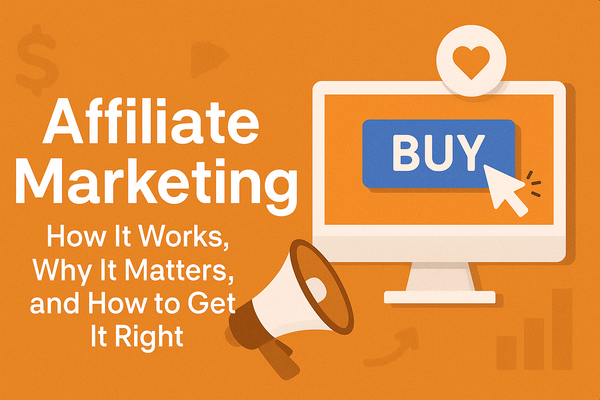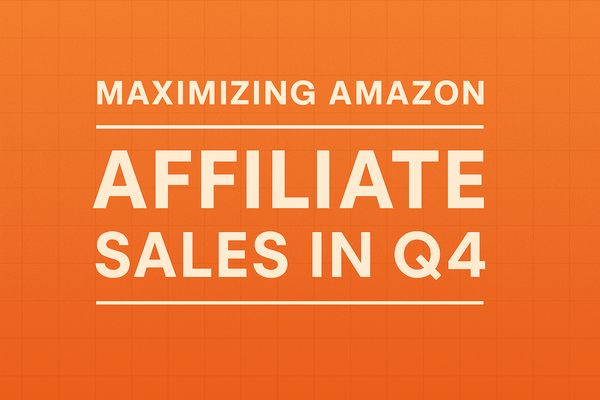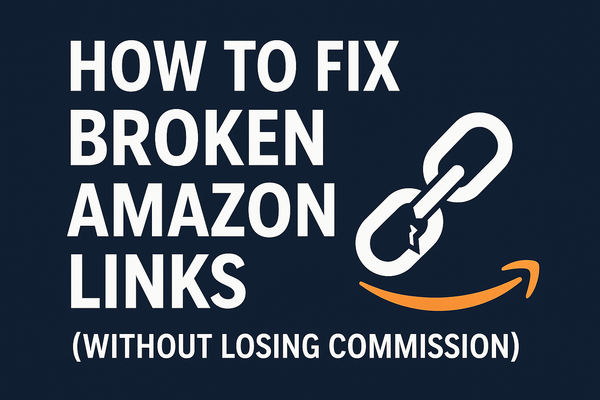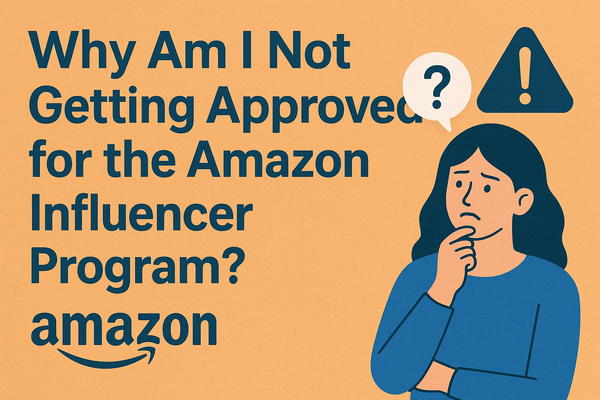Boost Your Amazon Storefront: Proven SEO Strategies Every Influencer Needs
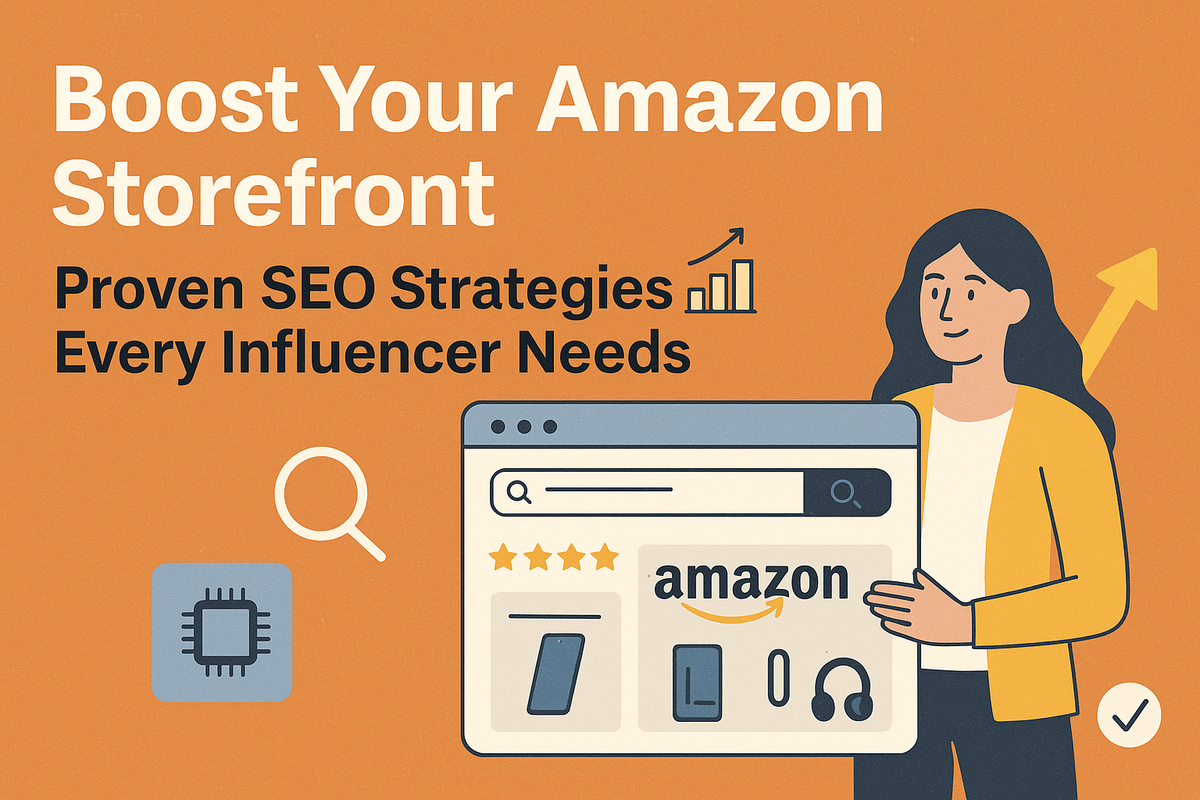
If you’re an Amazon influencer, having a well-curated storefront is just the beginning. The real challenge? Making sure your products are discovered by the right audience. While Amazon handles a lot of traffic, influencers who understand SEO can dramatically increase their visibility, drive more clicks, and earn higher commissions. In this blog, we’ll explore actionable SEO strategies for optimizing your Amazon storefront and ensuring your products reach potential buyers.
1. Understand How Amazon Search Works
Before diving into optimization, it’s crucial to understand how Amazon’s search engine operates. Unlike Google, Amazon prioritizes buyer intent. Its algorithm, A9, considers:
- Relevance: How closely your product matches the search query.
- Performance: Metrics like click-through rate, conversion rate, and sales history.
- Content Quality: Titles, descriptions, and images that help shoppers make a purchase.
For influencers, this means your storefront isn’t just about listing products—it’s about creating content that matches what your audience is actively searching for.
2. Optimize Your Storefront Title and Bio
Your storefront title and bio are prime real estate for SEO. Think of them as your meta title and meta description in traditional SEO.
- Title: Include your niche or primary focus. For example, “Gadgets & Tech for Everyday Life” immediately tells visitors and search engines what your store offers.
- Bio: Use 2-3 keyword phrases naturally. Highlight what makes your recommendations unique and why users should trust your picks.
A compelling bio not only improves search visibility but also builds credibility with your audience.
3. Use Keyword-Rich Product Titles and Descriptions
Each product you showcase should be optimized with keywords. Here’s how:
- Research Keywords: Use tools like Helium 10, Jungle Scout, or even Amazon’s autocomplete feature to find terms your audience is searching for.
- Titles: Include primary keywords but keep it readable. For instance, “Wireless Earbuds for Running and Workouts” is clear, descriptive, and keyword-friendly.
- Descriptions: Expand on the product benefits, use secondary keywords naturally, and avoid keyword stuffing. Describe why this product is essential to your audience, linking back to your influencer perspective.
4. Leverage Custom Storefront Sections
Amazon allows influencers to create sections within their storefronts. Think of these like mini landing pages:
- Thematic Sections: Group products by use-case, lifestyle, or niche. Example: “Home Office Essentials” or “Travel Must-Haves.”
- SEO Advantage: Each section has its own URL, title, and header, giving you multiple opportunities to rank for different keywords.
- User Experience: Organizing products logically encourages browsing, increasing dwell time—a factor Amazon values in rankings.
5. Optimize Images and Visual Content
High-quality images aren’t just visually appealing—they also contribute to SEO. Here’s why:
- Alt Text: Amazon allows you to add alt text to images. Use descriptive keywords that match search queries.
- Lifestyle Images: Show products in use rather than just on a plain background. This can improve conversion rates, which indirectly boosts your ranking.
- Videos: Incorporate short demo videos or product tutorials. Amazon increasingly favors listings with video content, improving both SEO and engagement.
6. Drive External Traffic
SEO doesn’t only happen on Amazon. Influencers have a unique advantage: their social media presence.
- Social Media Integration: Share links to your storefront and individual products on Instagram, YouTube, TikTok, and Pinterest.
- Backlinks: Blog posts, newsletters, and other platforms linking to your Amazon storefront can drive traffic and improve search rankings both on Amazon and externally.
- Content Marketing: Create how-to guides or product review videos with your affiliate links. The more context you provide, the more likely search engines are to recognize your relevance.
7. Monitor Performance and Iterate
SEO isn’t a one-time task—it requires consistent analysis and adjustment:
- Track Click-Through Rates: Identify which products and sections are attracting attention.
- Monitor Conversion Rates: High clicks with low conversions may indicate that product titles or descriptions need refining.
- Adjust Keywords: Trends change, so regularly update titles, descriptions, and sections with current high-performing keywords.
8. Build Trust and Authority
Amazon values sellers and influencers who create a credible shopping experience. Influencer trust signals can indirectly boost SEO:
- Reviews and Ratings: Encourage your audience to leave authentic reviews. Positive reviews improve conversion, which signals quality to Amazon.
- Authenticity: Share honest recommendations rather than promoting every product. Authenticity builds loyalty and repeat traffic.
- Content Engagement: Videos, tips, and product tutorials keep users engaged longer, enhancing your storefront’s ranking potential.
Conclusion
Optimizing your Amazon storefront with SEO is more than adding keywords—it’s about strategically presenting your products, guiding your audience, and creating a trusted shopping experience. By understanding Amazon’s search algorithm, leveraging keywords, crafting compelling content, and monitoring performance, influencers can significantly increase visibility, clicks, and ultimately, commissions.
The key takeaway: SEO for Amazon influencers isn’t just technical—it’s about connecting with your audience in ways that help them find exactly what they need. Start applying these strategies today and watch your storefront traffic—and earnings—grow.
